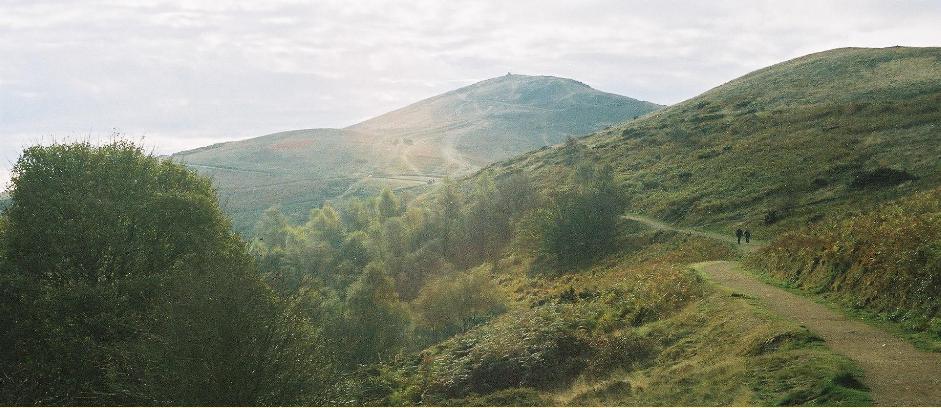This page is a tribute to Malvern, the town where I grew up. To most people "Malvern" probably means water, and to many more Elgar and his music, or perhaps Morgan cars. From the mid twentieth century, Radar Research may be added, and quite a few other famous names have Malvern connections.

The water results from the geology of Malvern's main feature - the hills, seen here looking south from a little below the top of the Worcestershire Beacon. It has been bottled for drinking for centuries and is still commercially exploited, but in the victorian era, people came for the "water cure", bathing in the water or being wrapped up in a sheet soaked in it - as well as drinking it! Some of the springs were enclosed and the buildings at St Ann's Well still stand (right).
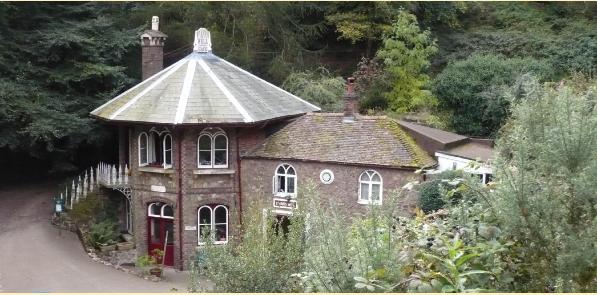
The coming of the railway in 1859 led to a huge increase in the number of visitors, including day trippers from Birmingham and the Black Country. Of course many visitors still come for the clean air, beautiful scenery and just to walk on the hills, although most of them probably now come by car. There are several public water spouts using the springs and people come from far and wide to fill containers with the water (my parents always had Malvern water in their kitchen). One particular spring on the West Malvern Road was a welcome sight for us when we had cycled up the long hill from the town!
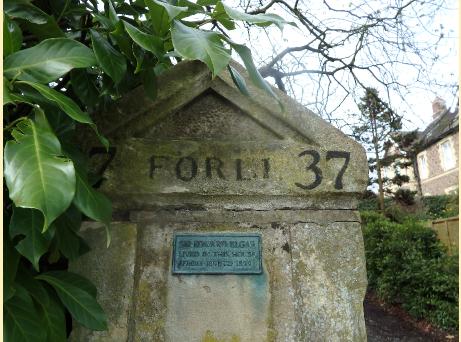
Edward Elgar was born in Broadheath, a village just a few miles outside Worcester, but at various stages of his life he lived in Malvern. The house shown at the left where Elgar lived with his wife Alice and their daughter Carice from 1891 to 1899 is of particular interest to me as it is located only a few hundred yards from my parents' house and I used to pass it every morning on my paper round. Elgar must have worked on his first important composition - the Variations on an Original Theme (Enigma) - here, as it was written between late 1898 and early 1899. This was the work which first gained him wider recognition.
This car (right) is a 2018 Morgan Plus Four in which I had an hour of fun as an anniversary present. It uses a design and method of construction almost unchanged since the company was founded in 1909 but at the time of writing (2020), there is a new more powerful version using a different chassis design, although externally it still looks much the same.
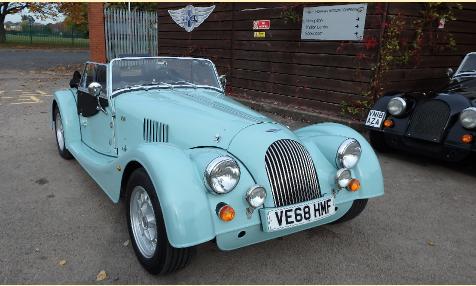
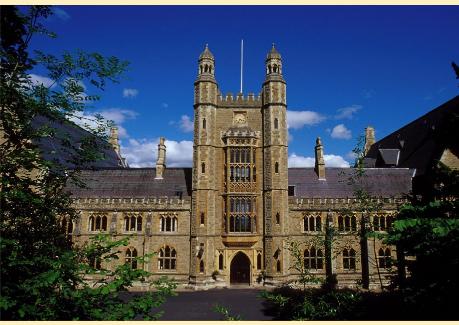
Malvern always had a large number of private schools with the College (left) being the most prestigious. It ranks as one of the country's major public schools, but during WW2 it served quite a different purpose. There were several government scientific research establishments in the 1930's, some working on the development of Radar, and just as the war started, these had become concentrated on the south coast around the Bournemouth area. But by 1942 there was serious concern that this location was exposed to disruption by enemy action and an alternative location was sought. The site chosen was Malvern College both because it was in a quiet rural area unlikely to attract the attention of the bombers, and also because it could provide the laboratory space which the scientists needed.
The college was duly moved to Harrow and the Malvern premises became the home of T.R.E (Telecommunications Research Establishment). The airfield at Defford just a few miles away provided the flying facilities for airborne testing. T.R.E served the RAF and a similar establishment serving the army was also based in Malvern on a site in Leigh Sinton Road known as Pale Manor. The college was returned to its rightful owners by T.R.E moving to a large nearby site which had been an inland naval training centre known as HMS Duke, and eventually T.R.E was combined with the Pale Manor establishment whereupon the organisation became known as the Radar Research Establishment (R.R.E.) with the two site designated "North Site" and "South Site". After a visit by the queen in 1957, the initials stood for "Royal Radar Establishment".

